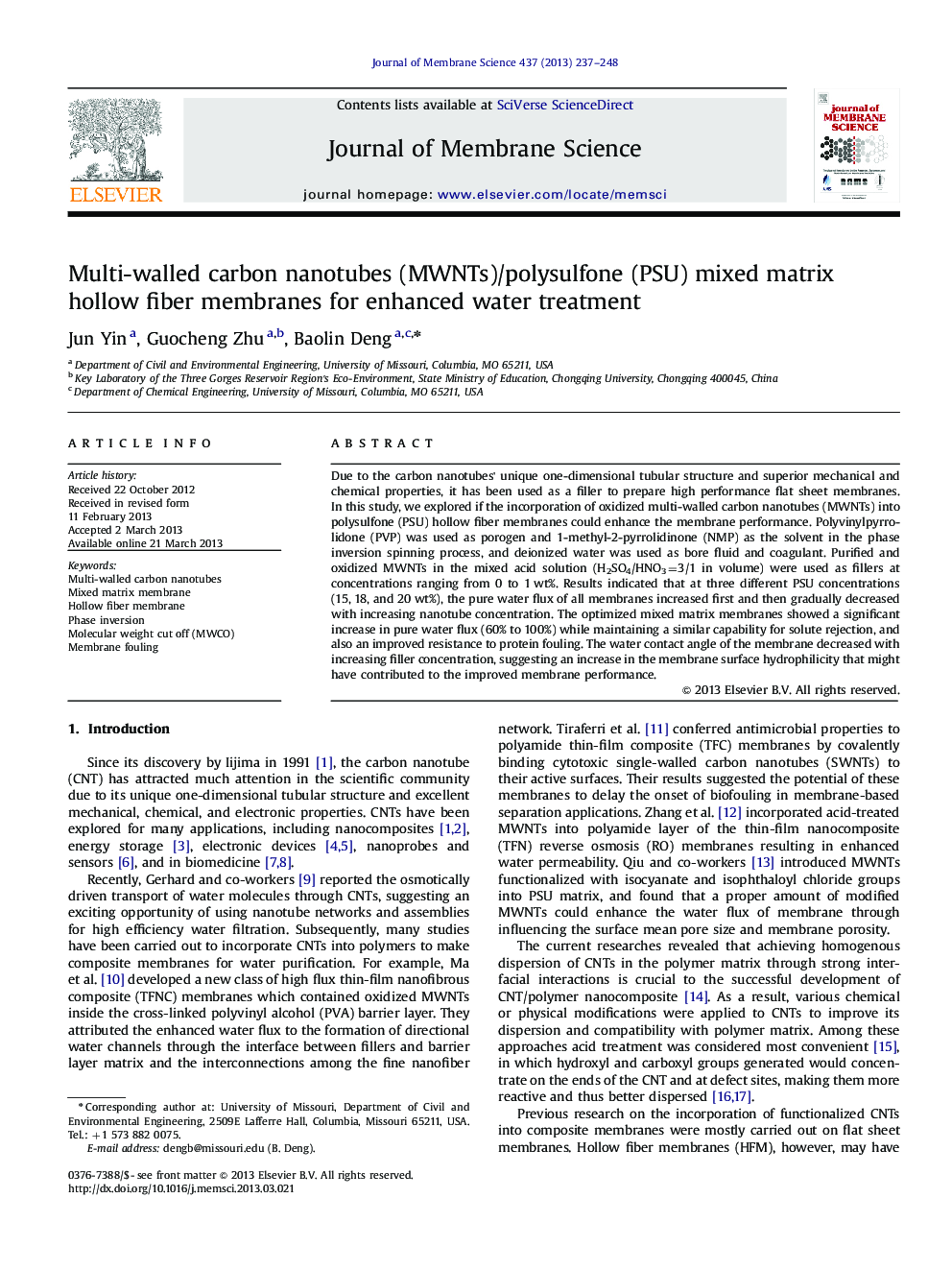| Article ID | Journal | Published Year | Pages | File Type |
|---|---|---|---|---|
| 634315 | Journal of Membrane Science | 2013 | 12 Pages |
•Oxidation of multi-walled carbon nanotubes (MWNTs) by using concentrated acid.•Incorporation of OMWNTs into polysulfone (PSU) hollow fiber membrane (HFM) for water treatment.•Effects of OMWNTs on HFM surface characteristics.•Effects of filler concentration on membrane performances in terms of permeability and rejection.•Fouling resistance of mixed matrix HFM to protein was evaluated using bovine serum albumin (BSA) as the model foulant.
Due to the carbon nanotubes' unique one-dimensional tubular structure and superior mechanical and chemical properties, it has been used as a filler to prepare high performance flat sheet membranes. In this study, we explored if the incorporation of oxidized multi-walled carbon nanotubes (MWNTs) into polysulfone (PSU) hollow fiber membranes could enhance the membrane performance. Polyvinylpyrrolidone (PVP) was used as porogen and 1-methyl-2-pyrrolidinone (NMP) as the solvent in the phase inversion spinning process, and deionized water was used as bore fluid and coagulant. Purified and oxidized MWNTs in the mixed acid solution (H2SO4/HNO3=3/1 in volume) were used as fillers at concentrations ranging from 0 to 1 wt%. Results indicated that at three different PSU concentrations (15, 18, and 20 wt%), the pure water flux of all membranes increased first and then gradually decreased with increasing nanotube concentration. The optimized mixed matrix membranes showed a significant increase in pure water flux (60% to 100%) while maintaining a similar capability for solute rejection, and also an improved resistance to protein fouling. The water contact angle of the membrane decreased with increasing filler concentration, suggesting an increase in the membrane surface hydrophilicity that might have contributed to the improved membrane performance.
